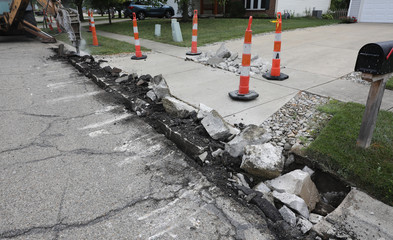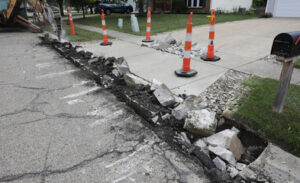Junk Removal services are designed to help you get rid of your unwanted clutter and regain space in your home. But what exactly happens to your junk after they haul it away? Look for companies that recycle and donate items whenever possible. This reduces waste and gives it back to those in need rather than sending it to landfills.
Electronics
Electronics are one of the fastest-growing waste streams, and if not handled properly, can be hazardous to our health. They contain dangerous materials like lead, arsenic, chromium, cadmium, and mercury. These substances can leach into soil, water and air when crushed or improperly disposed of. They can also pose a fire risk and harm people and pets.

If you have old electronics collecting dust in your home, it’s important to sort them into piles for repair, donation and safe disposal. Be sure to remove any batteries before discarding. It’s also a good idea to wipe your computer’s hard drive of personal information before donation or recycling.
Many local charities and nonprofits are looking for functional, used electronics to donate. For example, schools, adult education and employment programs and domestic violence and homeless shelters often need computers, cellphones and TVs. You can find a list of organizations that accept these items here.
You can also recycle your unwanted electronics at a household hazardous waste facility. These facilities are usually run by the city, county or state. Look online or call your municipality to find the nearest location.
Renting a dumpster is an excellent option if you’re planning to dispose of a large number of electronics and other junk. It allows you to get rid of everything at once and avoids the hassle of multiple trips to collection sites. However, some electronics aren’t allowed in dumpsters and may require a processing fee. Be sure to check with your junk removal company about local regulations before you book.
Tires
Tires can be a difficult item to dispose of because they don’t break down easily and, if not disposed of properly, can cause environmental problems. If tires are left in natural areas, they can contaminate soil and waterways with heavy metals and create breeding grounds for mosquitoes that carry diseases like the West Nile virus. Tires also take up valuable space in homes and businesses, and can be unsightly and a safety hazard.
Fortunately, there are many ways to recycle tires and help the environment at the same time. Many automotive and tire servicing companies allow you to exchange your old tires for new ones at the same time as you get your car serviced, or they may have special storage facilities where they can collect used tires for recycling. You can also bring your tires to a household waste recycling center, although some of these have a limit on how many you can donate, and they might charge a small fee for the collection.
Shredded tires are often used for civil engineering applications. They can be used as back-fill for retaining walls, fill in landfill gas trench collection wells and as a base material for roadway landslide repair projects. They are also used as a light-weight material in landfill caps, leachate collection systems and operational liners.
Whole and shredded tires can also be recycled as mulch for gardens and flower beds. They can be a good alternative to wood mulch because they don’t decompose as quickly and can retain moisture in the garden. However, you should only use them on non-edible plants because they can absorb toxins from the soil and water into their roots.
Almost all passenger and truck tires are recyclable through a program operated by Tire Stewardship BC (TSBC). You can return your used tires to any participating retailer during business hours, and there are many drop off locations throughout the province. The tires are then processed into a variety of products, including crumb rubber, granulated rubber with the steel wire and fibre removed, and coloured mulch. The recycling process also conserves energy compared to extracting and processing raw materials.
Furniture
Whether you’re moving or just sick of looking at your busted furniture, junk removal services can help you get rid of it. Some companies may not take everything, but they can make the process much easier for you. The best thing is that they know where to take your junk and will recycle as much as possible. This is a great way to help the environment and avoid cluttering up landfills with unwanted items.
Junk removal services are ideal for large, bulky items like furniture that can’t be easily transported by yourself. It can be difficult to carry these items down stairs or around tight corners, and it’s not practical for most homes. A junk removal service will take care of the lifting and hauling for you, which can save you time and energy. They will also know how to properly dispose of your furniture and other items, so they won’t end up in a landfill.
The product and price section of your business plan should explain the types of products and services you will offer, along with their prices. This will help you determine how to market your business and attract customers. You should also include information about your target customer base in this section. This includes demographics and psychographic profiles, such as age, gender, location, income levels, and lifestyle preferences.
Many people choose to donate or recycle their furniture rather than throw it away. This is a great way to help other people and the planet, and it’s also good for your wallet. Depending on your local laws, you might have to pay a fee to dispose of certain types of furniture. If you’re unsure, you can always ask your local trash collector or waste disposal company to find out if there are any restrictions on what can be disposed of in your area.
You can also use a dumpster to get rid of your junk, but this method requires more work on your part. You will have to load your dumpster and transport it to a landfill or recycling center. This can be expensive, and it’s usually more convenient to hire a junk removal service.
Appliances
A junk removal company is a great option for removing large appliances that have become useless to you. These items are very heavy and can be difficult to move on your own. Junk removal services can remove all your unwanted appliances and have them disposed of in an environmentally safe way. They are also able to recycle any metal parts that may still be attached. Many appliances are made from materials that can cause environmental harm if they are simply tossed in landfills.
If your appliances are still in working condition, you can donate them to a charity organization. Non-profits can often receive tax deductions for donated items. Alternatively, you can use an online website like The Freecycle Network to find someone who is interested in your used appliances.
You can also contact local recycling or scrap metal companies to see if they are interested in purchasing your old appliances. They can then disassemble them and recycle the wire and any scrap metal that might be attached. Depending on the condition of your appliances, they might be able to sell them for cash or reuse them for other purposes.
Many appliance manufacturers have programs to recycle or return their products. These can be found on their websites or by calling customer service. They might offer a pickup service or you might be required to bring them to their disposal site.
Leaving a broken appliance at the curb for trash collection can be dangerous to children and pets. It can also attract rodents and other unwanted pests. A professional junk removal company can safely and quickly lug your unwanted appliances away from your home.
The cost of hiring a junk removal company can be relatively inexpensive when compared to the cost of replacing or repairing an old, malfunctioning appliance. If you are considering a junk removal company, check out their reputation online and their prices before hiring them. You can also ask family and friends for recommendations. Lastly, always check with your local government to see what their regulations are on appliance removal and disposal.

 But sometimes large potholes and a sunken area suggest that it’s not worth repairing the damage. If so, replacement is the best option.
But sometimes large potholes and a sunken area suggest that it’s not worth repairing the damage. If so, replacement is the best option.
 Commercial painters are specialized contractors who specialize in painting large buildings and structures.
Commercial painters are specialized contractors who specialize in painting large buildings and structures.